
It’s that time of the year when I look back over the past 12 months and choose the top ten discoveries from the world of biblical archaeology. As part of my work with the Associates for Biblical Research (BibleArchaeology.org), I sift through over 200 news reports per year for weekly Breaking News updates. This results in close to 50 updates each year, from which I select the ten I believe to be the most significant.
If you’re new to my annual top ten list, here are my criteria:
- These discoveries must be directly related to people, places or events mentioned in Scripture, or to the composition of Scripture itself.
- They must be discoveries or new studies about discoveries, as opposed to announcements.
- I only consider discoveries/studies that have been publicized through an official announcement by a Ministry of Antiquities or from a licensed archaeological dig with the expectation that a peer-reviewed article will follow, or ones that are published in peer-reviewed or other reputable journals.
You can find my past top ten lists here: 2022, 2021, 2020, 2019, 2018, 2017, and 2016, as well as the Top Ten Discoveries of the Decade (2010-2019), and Top Ten Discoveries of All-Time Relating to Both the Old and New Testaments.
Before beginning, here were some honorable mentions:
- Mysterious Stone Channels in Jerusalem – In August 2023 reports emerged of the discovery of a series of rock channels the City of David archaeological site. Dating to the 9th century BC, the purpose of these installations have flummoxed archaeologists. Some have suggested they may have been used as soaking vats for products such as flax or to hold dates left in the sun to produce date honey. Basically they found…something, but are unsure of what it is, which is why it did not make my top ten list.
- Pool of Siloam excavations – The Pool of Siloam, mentioned in John 9:7 was first discovered in 2004, exposing several courses of steps. During 2023, a team of archaeologists began fully excavating the pool. Other than exposing several more steps, relatively little has been announced about their progress. While some have suggested the lack of information is an indication that nothing has been found, I believe we need to wait and see what the team announces (and publishes) in order to make an informed analysis of the importance of these excavations. Until then, its not on my list of top ten discoveries.
- Lead Tablet from Mount Ebal – Last year’s #1 find, the lead curse tablet from Mt. Ebal, was in the news again in 2023. The peer-reviewed article was published in May 2023, with a critical response following in the fall. I’ve summarized my own thoughts about these developments HERE. However, since were in the midst of watching the academic evaluation process play out in real-time, and little new information of substance has been added to what was already announced about the artifact, it did not make my list in 2023.
With that said, here are the top ten discoveries in Biblical archaeology in 2023.
10. Four Roman Swords Discovered in Judean Cave (Sept. 2023)

Four 1900-year-old Roman swords were discovered in a cave in the Ein Gedi Nature Reserve near the Dead Sea in Israel. A team of archaeologists was at the cave to photograph a well-known stalactite that bears an inscription written in ancient Hebrew script that is similar to that used during the First Temple period. While there they happened to find the swords lodged in a crevice. Three of the iron swords were still in their wooden and leather sheaths, and were the size of Roman “spatha” swords (24 to 26 in.; 60 to 65 cm), while the fourth sword was a shorter ring-pommel sword (18 in; 45 cm). The initial theory is that these swords were taken from Roman soldiers by Jewish rebels during the Bar Kokhba Revolt (AD 132 to 135) and hidden in the cave. An article on the swords has been published in “New Studies in the Archaeology of the Judean Desert: Collected Papers.” According to a report in the Autumn 2023 edition of Artifax magazine, the shorter, ring-pommel sword was likely a pugio (daggar) which Roman soldiers carried as a side-arm weapon; “the sword (Greek: machaira) used by Peter to cut-off the ear of the High Priest’s servant, almost certainly would have been called pugio by the Romans” (“Sensation in the Judean Desert: Cache of Roman Swords, Artifax, Vol. 39, No. 4, Autumn 2023, pg. 5).
REPORT: https://www.timesofisrael.com/four-1900-year-old-roman-swords-discovered-hidden-in-desert-cave/
9. Gold Bead from the Roman Era Discovered in Jerusalem (Feb. 2023)
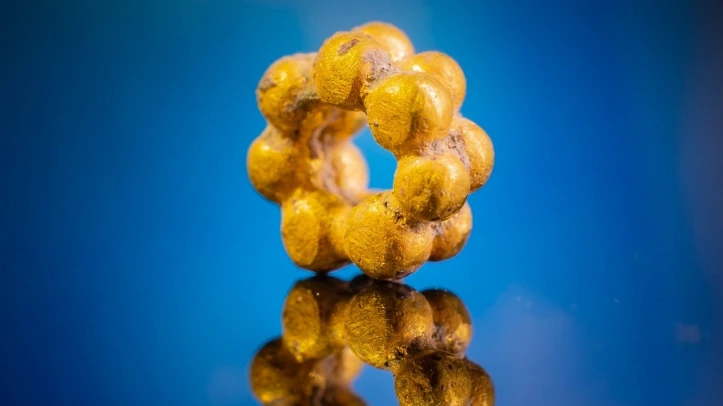
In February 2023, it was announced that a volunteer working at the Emek Tzurim National Park sifting site found a 1,600-year-old gold bead in material from the nearby Pilgrimage Road excavations. The earth in which the bead was found came from an impressive Roman building that was 25 meters long, had mosaic floors, and clearly belonged to the elite of Jerusalem. The bead itself is made of ten tiny balls of gold that were attached to each other in the shape of a ring. This method of construction is known from ancient Mesopotamia. The bead was likely once part of a necklace or bracelet and may have been accidentally lost when the jewelry broke. Gold artifacts are rare finds, making this a sensational discovery in the news.
8. Early City Planning as Evidence of Extent of Davidic Kingdom (June 2023)
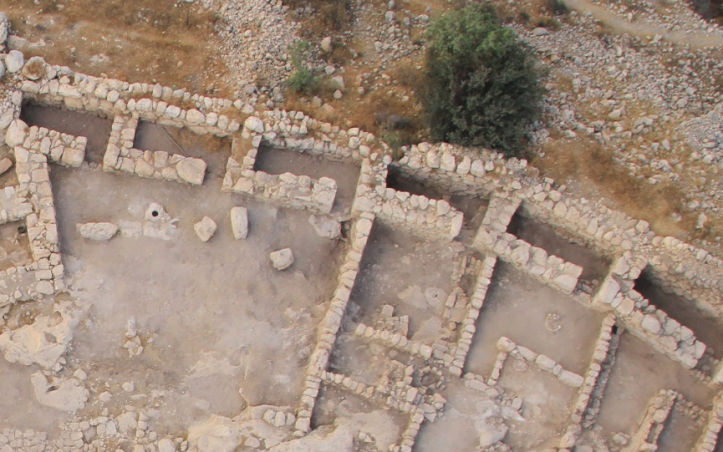
Prof. Yosef Garfinkel from Hebrew University has published a new academic article in the Jerusalem Journal of Archaeology entitled, “Early City Planning in the Kingdom of Judah: Khirbet Qeiyafa, Beth Shemesh 4, Tell en-Naṣbeh, Khirbet ed-Dawwara, and Lachish V,” in which he provides evidence of urban organization in the Kingdom of Judah around the time of King David. In addition to the sites he has excavated, including Khirbet Qeiyafa and Lachish V, he also scoured old publications from the other sites for evidence. In the article he demonstrates that all five cities had similar urban layouts, including an outer wall that had houses on one side of it and a road on the other side. All were connected by important roads within the kingdom, and several of the sites have yielded inscriptions, indicating a certain level of written communication at that time. This runs counter to the narrative of minimalist scholars who believe the Bible is inaccurate and unreliable in its description of the extent of David’s kingdom.
7. Ancient Inscription from the Book of Psalms Discovered at Judean Desert Fortress (Sept. 2023)
Archaeologists from the Hebrew University of Jerusalem unearthed an inscription from the book of Psalms dating to the Byzantine era at Hyrcania in the Judean Desert. Hyrcania, located ten miles southeast of Jerusalem, was constructed in the first or second century BC by the Hasmonean ruler John Hyrcanus or his son Alexander Jannaeus. It was enlarged by Herod the Great, but was abandoned after his death. Finally, it was occupied by a small Christian monastery at the end of the fifth century AD. The Byzantine-era inscription was discovered on the side of a large building stone and is written in Koine Greek. It adapts Psalm 86:1–2 addressing it to Jesus; below a red cross and inscribed in red ink are the words, “Jesus Christ, guard me, for I am poor and needy. Guard my life, for I am faithful to you”. The original psalm of David reads, “Hear me, Lord, and answer me, for I am poor and needy. Guard my life, for I am faithful to you; save your servant who trusts in you. You are my God” (NIV). The find may be the first Koine Greek rendering of a psalm ever discovered inscribed on stone rather than on parchment or papyrus.
REPORT: https://www.jpost.com/archaeology/article-760618
6. Destruction Layers from Both the Babylonians and Romans Discovered on Mount Zion (Aug. 2023)
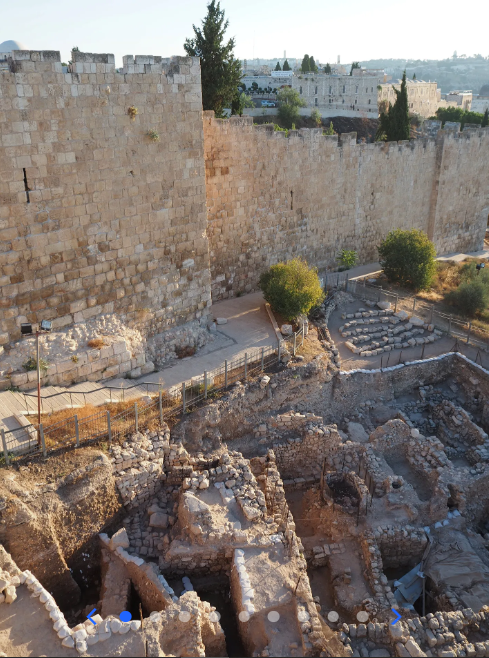
At team from the Mount Zion Archaeological Excavation, led by Shimon Gibson and Rafi Lewis, have unearthed evidence of both the destruction of the Babylonians in 587/586 BC and of the Romans in AD 70. The destruction levels displayed conflagration in strata that were separated by a couple of meters. This is the first time destruction layers from the Babylonian destruction of Jerusalem and the Roman destruction of the city have been found in the same area. In addition, ample pottery from the Persian era (539-322 BC) was unearthed by the team. The article in Haaretz below notes that Shimon Gibson believes “Nehemiah restored parts of the original Iron Age wall and gates associated with Mount Zion, not just at the City of David” as previously thought.
5. New Radiocarbon Study Clarifies the Dating of Gezer’s Famous Six-Chambered Gate (Nov. 2023)
A new radiocarbon study was published in the journal PLOS ONE which analyzes 35 radiocarbon dates from seven occupation layers at Gezer. These dates were obtained during recent excavations at Gezer led by the Tandy Institute for Archaeology at Southwestern Baptist Theological Seminary and they range from the latter part of the Late Bronze Age (LB IIB) to the Iron Age II. One interesting finding is that stratum 8, which includes the famous six-chambered gate, a casemate wall, and an administrative structure dates to early in the tenth century BC. This means these structures were built within the reign of Solomon, as the Bible says (1 Kgs 9:15). These findings also contradict the view of Israel Finkelstein, who has publicly stated that he believes Gezer was built about a century later by the Omride dynasty of the Northern Kingdom.
REPORT: https://www.jpost.com/archaeology/article-773513
4. New Study of Mesha Stele (Moabite Stone) Affirms the Inscription Includes the Phrase “House of David” (Jan. 2023)

André Lemaire and Jean-Philippe Delorme recently published an article in Biblical Archaeology Review (Winter 2022 – https://www.baslibrary.org/biblical-archaeology-review/48/4/2) summarizing new evidence supporting the claim that the Mesha Stele (Moabite Stone) refers to Beit David, the “House of David.” While Lemaire first suggested the possibility 30 years ago, recent developments in photography have provided new images to analyze. In 2015, a group of researchers from the University of Southern California used Reflectance Transformation Imaging (RTI), combining multiple, high-resolutions photos taken from different angles into a single 3D image. In 2018, a team from the Louvre Museum took new photos by shining a light through the original squeeze of the damaged part of the stele. Since the phrase “House of David” occurs in a section that covers both the original stone inscription and damaged part that remains only through the squeeze that was taken, both of the new developments in photography have been helpful. These images establish that, of five letters in btdwd, the first, third, fourth, and fifth have been confirmed. Only the second letter is somewhat unclear, but is likely a taw based on the context. Furthermore, the new photographs clearly establish that there are word dividers in the form of dots that occur before and after these letters, implying it is a single phrase. The Mesha Stele is a victory monument set up by the Moabite king, Mesha, recording events during his reign, including his rebellion against Israelite subjection (2 Kings 3).
REPORT: https://www.jpost.com/archaeology/article-728354
3. Third-Century Syriac Translation of the Gospel of Matthew Found (April 2023)
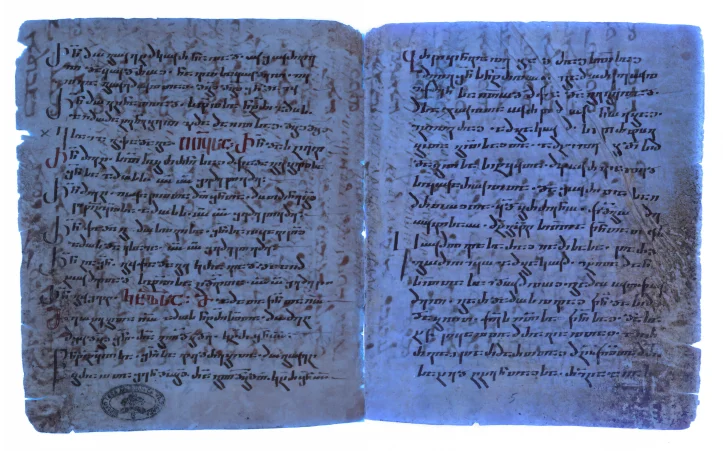
A scholar from the Austrian Academy of Sciences has discovered a palimpsest fragment of a third-century Syriac translation of the Gospel of Mathew in the Vatican Library. The Syriac Gospel of Matthew was erased over 1,300 years ago by a scribe who reused the parchment for another work. In a study published in the journal, New Testament Studies, Grigory Kessel reports that the manuscript was discovered while researchers were using ultraviolet light to reveal the hidden text that had been erased. In this case, it turned out to be a double palimpsest, as text had been erased twice to make room for new writing, resulting in three layers of text. The Syriac Gospel of Matthew was written on the parchment sometime in the third century but was erased in the sixth century so that a Greek work called the Apophthegmata Patrum could be recorded. Finally, this was erased in the tenth century and the parchment was reused to write a collection of Georgian hymns. This manuscript is only the fourth known textual witness to the Old Syriac translation of the Gospels discovered to date.
REPORT: https://phys.org/news/2023-04-fragment-year-old-testament.html
2. New Papyrus Published Containing Sayings of Jesus (Sept. 2023)
A papyrus fragment containing quotes from Matthew, Luke, and the Gnostic Gospel of Thomas was recently published in the most recent volume of the Oxyrhynchus Papyri (volume LXXXVII). The papyrus dates to the late second or early third century and is part of the collection of over 500,000 papyri discovered at Oxyrhynchus, Egypt in the late 1800’s and early 1900’s by Bernard Grenfell and Arthur Hunt. The fragment, known by it’s technical designation P.Oxy. 5575, contains small portions of Matthew 6, Luke 12 and the Gospel of Thomas 27. It is the oldest manuscript with text from Matt 6 and the earliest witness to the Gospel of Thomas. The Gnostic Gospel of Thomas is a later, second-century work that purports to contain secret sayings that Jesus gave only to Thomas, and it is not considered an authentic record of actual sayings by the historical Jesus described by the canonical Gospels from the first century
REPORT: https://textandcanon.org/whats-the-big-deal-about-a-new-papyrus-with-sayings-of-jesus/
1. First-Century Discoveries at el-Araj/Bethsaida? (Aug. & Nov. 2023)

The el-Araj Excavation Project completed its summer and dig seasons and uncovered more evidence showing that the site was a first-century fishing village, possibly the New Testament town of Bethsaida. This summer the team excavated in Area D and continued to find evidence of occupation in the first century. These finds included coins, pottery, fishing weights, and stone vessels. In addition, an inkwell was discovered in a home that also contained numerous fishing weights. This would seem to indicate that first-century fishermen could be literate. Some scholars have suggested that fishermen like Peter and John could not have written New Testament books because they were merely illiterate fishermen. The discovery of an inkwell in a fisherman’s home challenges this assumption.
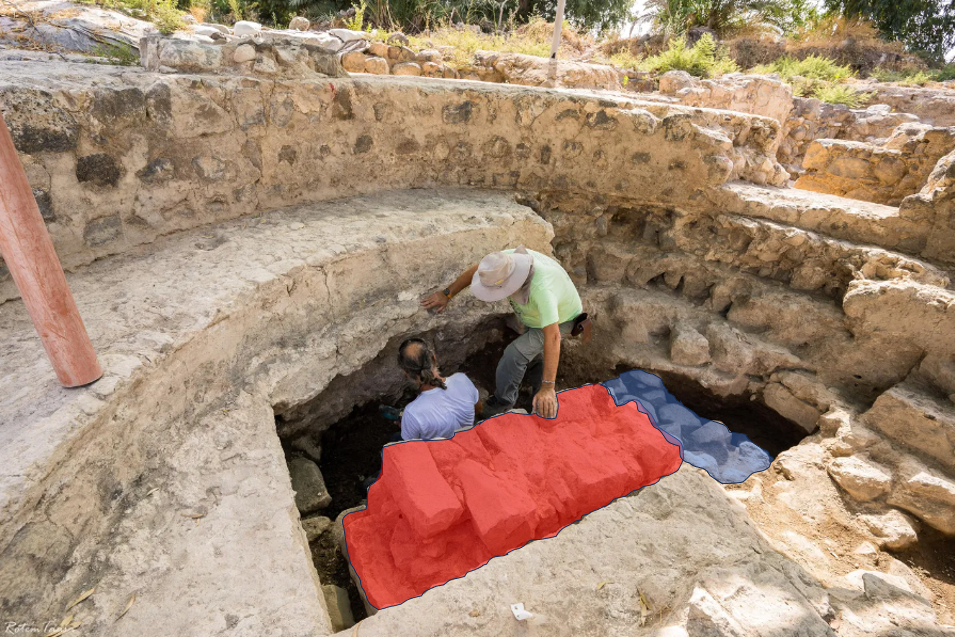
In the fall, they carefully removed the mosaic floor of the apse of a Byzantine church and have identified two earlier walls beneath it. One of the walls appears to have been “boxed in” by the apse and dates to the second or third century AD. Nearby, the team discovered an earlier wall perpendicular to the first and dating to the first century AD. The Byzantine church is believed to be the one mentioned in the writings of Willibald, the bishop of Eichstätt in Bavaria, who visited Bethsaida in AD 725 and described a church that was built over the house of Peter and Andrew. The team’s hypothesis is that the Byzantines venerated the second- or third-century wall, mistakenly believing it to belong to the house of Peter and Andrew, since the first-century wall was likely under centuries of dirt by that point.
REPORTS: https://www.elarajexcavations.com/updates/categories/season-7
BONUS: Link to ABR’s Digging For Truth episode entitled, “Where is Biblical Bethsaida?”
Conclusion
Top ten lists, by definition, focus on extraordinary finds. There are many, many ordinary finds at numerous digs all across the Bible lands. In addition to the excavations at el-Araj or Mount Zion or the Givati Parking Lot, mentioned above, there are also good people digging at the following locations. You should check their digs out too.
- Shiloh
- Abel Beth Macaah
- Tall el-Hammam
- Tell Burna
- Ophel Excavations in Jerusalem
- Plus many others, not only in Israel, but also Egypt, Turkey, and Jordan
Biblical archaeology, which I define as archaeology in the lands of the Bible, consistently illuminates and affirms details in the biblical text, as well as helps us better understand the biblical world. The ten significant studies/discoveries listed above from 2023 will help students of the Bible in many ways. But so will the many, many ordinary finds from many of the other excavations.
In 2024, you can stay up-to-date on the latest BREAKING NEWS in biblical archaeology each week HERE or catch my monthly recap of the top three news reports in biblical archaeology here at BibleArchaeologyReport.com.
One Final note: part of the fun of top ten lists is to compare them with other top ten lists. After publishing my blog each year I compare my list with Todd Bolen’s list at BiblePlaces.com and Gordon Govier’s list for Christianity Today. Check out their lists too!


 The Koine Greek inscription of Psalm 86 from Hyrcania. Photo: Dr Oren Gutfeld and Michal Haber
The Koine Greek inscription of Psalm 86 from Hyrcania. Photo: Dr Oren Gutfeld and Michal Haber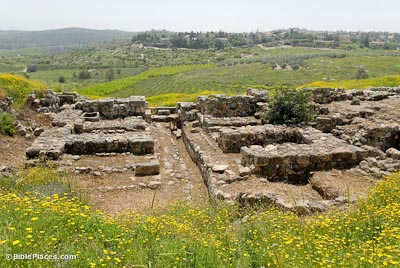
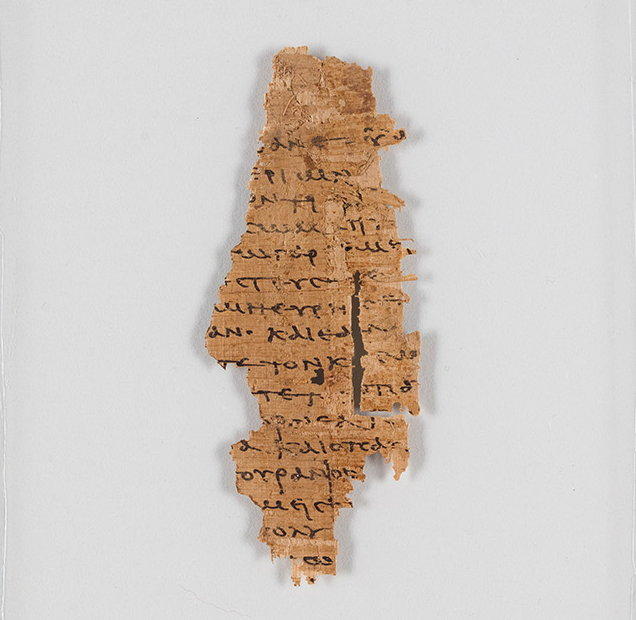
Could you clarify #3? The sources you cited suggest the Old Syriac *translation* was from the 3rd cent., but the *copy* is from the early 6th cent. I haven’t had my coffee today, but as far as I can tell, the palimpsest find reported here was not “written on the parchment sometime in the third century.”
According to the press release from the Austrian Academy of Sciences (https://www.oeaw.ac.at/en/news/new-testament-fragment-of-1750-year-old-translation-discovered) the Syriac text of the Gospel of Matthew is 1750-years-old. “About 1,300 years ago a scribe in Palestine took a book of the Gospels inscribed with a Syriac text and erased it”